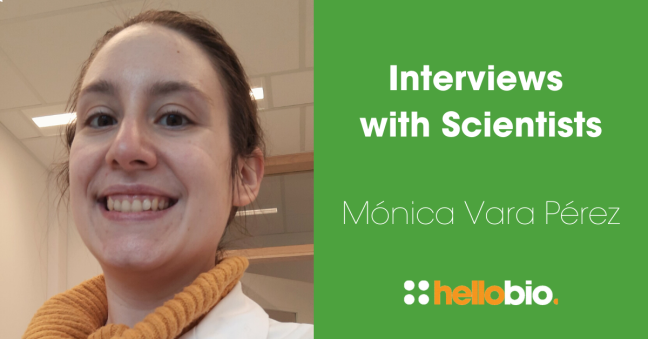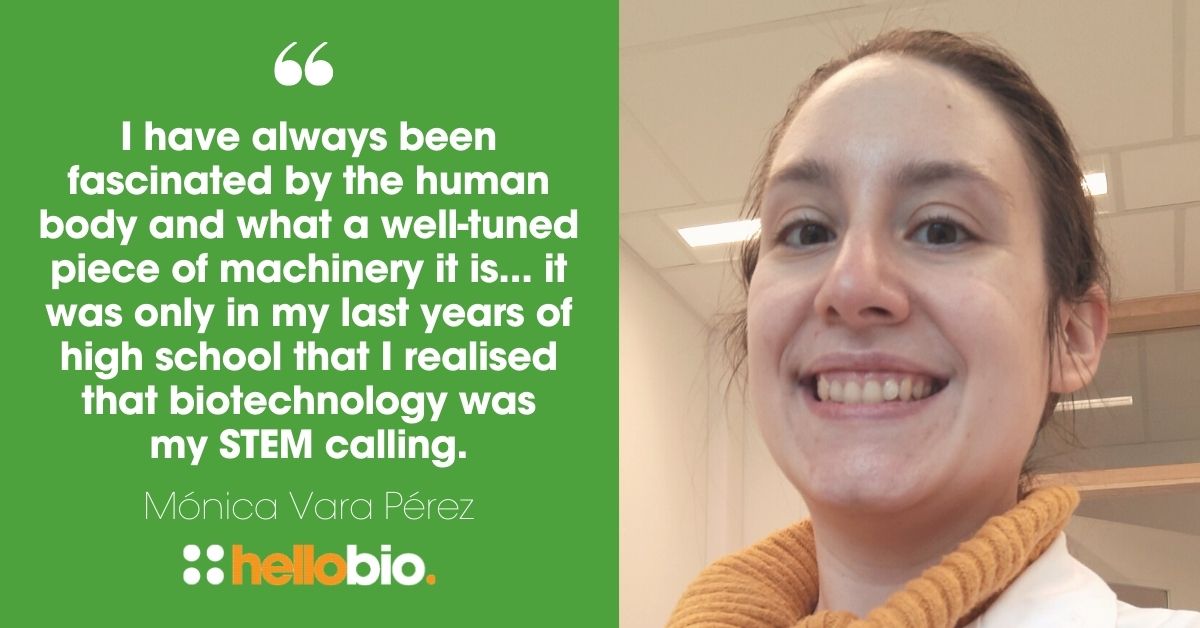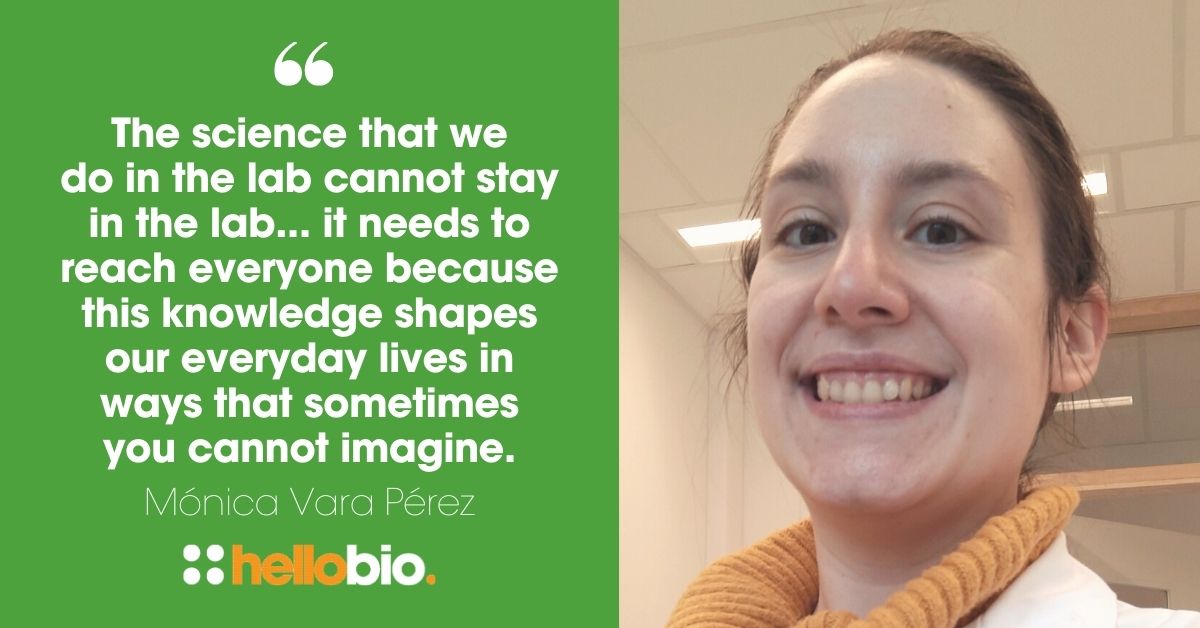Interviews with Scientists: Mónica Vara Pérez
Mónica Vara Pérez is a postdoctoral researcher at the VIB-VUB Center for Inflammation Research in Belgium. Her current research is focussed on glioblastoma (a type of brain cancer), and she is passionate about science communication, being actively involved in several SciComm initiatives in Belgium.
Born and raised in Zamora, Spain, Monica holds a BSc. degree in Biotechnology from the University of Salamanca and an MSc. degree in Molecular Medicine from the ErasmusMC in Rotterdam, Netherlands. During her PhD at VIB-KU Leuven in Belgium, she shed some light on the complex role of the BH3-only protein BNIP3 in melanoma progression. As a postdoctoral researcher at VIB-VUB Belgium, Mónica is now exploring the relationship between brain immunology and glioblastoma.
We spoke to Mónica about her current role, her PhD research into skin cancer, and her thoughts on equality in STEM…
Thanks for speaking with us, Mónica! Firstly, please tell us a bit more about your current role...
I am currently a postdoctoral researcher at the VIB-VUB Center for Inflammation Research in Belgium. I’m investigating the contribution of the brain immune compartment to the development of glioblastoma, a lethal type of brain cancer.
What was the focus of your PhD research?
During my PhD I studied how a small protein called BNIP3 contributed to maintaining the identity and behaviour of melanoma cells, the deadliest type of skin cancer. We discovered that this protein helped to keep at bay the levels of iron inside of the melanoma cell so that an important oncogene could continue supporting the melanoma cells and allowing the tumours to grow.
What do you enjoy most about working in STEM?
Being able to dive constantly into fascinating biological questions.
Did you always want to work in science when you were younger, and if so why?
I have always been fascinated by the human body and what a well-tuned piece of machinery it is, so I always knew that I would end up doing something related to science and biology. But, as for many teenagers, figuring out the details took me a bit longer, and it was only in my last years of high school that I realised that biotechnology was my STEM calling.
What do you think are the biggest challenges facing life scientists today?
On the one hand, obtaining funding and permanent positions in times of “publish or perish” is a big challenge. The slow-paced science that brought us to the great findings of the 20th century is now impossible. On the other hand, and because of the pressure of this system, finding a good work-life balance is another.
Women remain underrepresented in all fields of STEM. What can be done to improve the gender balance in science?
This is a million-dollar question and very complex to address in a short answer due to the multiple factors involved. I will just bring up one shocking fact that I have heard now in multiple WIS events which brings a lot of food for thought: the only measure that is improving the gender balance (not only in science but in other fields as well) are quotas.
- But aren’t quotas discriminating by definition? Because we are allocating women just because they are women, not based on their talent and ability.
- Yes, but there are so many prejudices (known as implicit bias) in the determination of talent and ability, that the only way to make sure these can shine is by being forced to put them there. And, this is true not only for women but for other “minorities” as well.
We still have a great way ahead of us, right? If anyone is interested in the matter, I wrote a (slightly longer) reflection covering some of these topics for CEBE’s blog based on the discussions of the WIS events we organised a couple of years ago. You can read the article here.
You are passionate about science communication. Why is this so important to you?
The science that we do in the lab cannot stay in the lab available only for scientists. It needs to reach everyone because this knowledge shapes our everyday lives in ways that sometimes you cannot imagine. It is our duty as scientists to bring it to you and explain it in such a way that you understand it (even in just a conceptual way) and that it makes you think, wonder, understand and appreciate the world we live in.
What's the most important lesson you have learned in your career so far?
The more I know, the less I know and the more I want to know.
Outside of your career, what do you enjoy doing most?
I love dancing, theatre, spending time with family and friends, and travelling.
What do you think is the greatest scientific discovery of all time?
The endosymbiotic theory was postulated by Lynn Margulis in 1981. In a nutshell, this theory proposed that the eukaryotic cells started as groups of interacting entities that joined together in a specific order. The prokaryote elements could have entered a host cell, perhaps as an ingested prey or as a parasite. Over time, the elements and the host could have developed a mutually beneficial interaction, later evolving in an obligatory symbiosis, resulting in the eukaryotic cells that we know nowadays.
Do you have a favourite science quote?
“A scientist in her laboratory is not a mere technician: she is also a child confronting natural phenomena that impress her as though they were fairy tales.” - Marie Skłodowska-Curie
And finally… what’s your favourite science joke?
If you are not part of the solution, you are part of the precipitate!
_________________________________________________
Thank you so much for a fantastic interview, Mónica! We wish you all the best with your ongoing research.
Connect on LinkedIn: Mónica Vara Pérez
Read more of Mónica’s articles on the CEBE blog (Spanish Scientists in Belgium)
_________________________________________________
If you enjoyed this article, why not check out the other resources available on our blog. We are passionate about supporting life scientists including early career life scientists and PhD students - with really low-priced reagents and biochemicals, early career scientist grants, and resources to help with both personal and professional development. We know how tough it is - so we hope you find these helpful!
More General Support for Life Scientists
For advice on writing papers, dissertations, presenting at conferences, wellbeing, PhD support, networking and lots more, we have a huge range of articles to help - just click below:
Save up to 50% on our high purity reagents...
When you get to the stage of planning your experiments, don't forget that we offer a range of low-cost, high-purity agonists, antagonists, inhibitors, activators, antibodies and fluorescent tools (yes - they really are around half the price of other suppliers!) You can use our Quick Multi-Search Tool to search for lots of products in one go, and the range includes:
- Enzyme inhibitors and activators
- Chemogenetic ligands
- Ion channel modulators
- GPCR & ionotropic receptor ligands
- Cell biology reagents & biochemicals
Technical resources
Try our Molarity Calculator: a quick and easy way to calculate the mass, volume or concentration required for making a solution.
Try our Dilution Calculator: an easy way to work out how to dilute stock solutions of known concentrations
And finally, don't forget to check back in with our blog regularly for our latest articles. If there’s something you’d love to contribute to the community, whether that’s an interview or article, drop us a line at hello@hellobio.com
---



















